|
If you work in the industrial automation space, you’ve very likely heard the term “thought leader.” I don’t think that this term is unique to the automation space, but my impression is that automation people use it a lot more than, say, computer programmers. My understanding of the term is that it means someone has spent a lot of time thinking about certain topics, and because of their superior abilities, they have insight that no one else has. To me, Steve Jobs and Elon Musk are thought leaders. Most people simply don’t qualify. I mentioned this to a friend, and he was baffled “That’s not what thought leader means”, he said. To him a thought leader is someone who leads a conversation with various stakeholders as they try to come to some type of decision. This person has the skills and expertise to forge consensus across competing interests. It has nothing to be with being a genius. Now it was my turn to be floored. Was I wrong about this? Are these self-proclaimed thought leaders not holding themselves out as insightful geniuses, but rather as consensus builders? I could certainly see where my friend was coming from. To him, thought leadership was about leading a group of individuals, each with their own thoughts, proclivities and prejudices, towards some type of consensus. Some quick googling shows that by far the most common meaning of thought leader “is an individual or firm that is recognized as an authority in a specialized field and whose expertise is sought and often rewarded.” My friend's idea, while interesting, is simply not how the term is defined. But, he's a smart guy, and if he thinks that way, then surely there are some other people who think that way too. This conversation is a great reminder that it’s always important to examine your assumptions and to make sure that everyone agrees on the meaning on seemingly obvious words. Another takeaway is that if other people are calling you a thought leader, you may very well be one. If you’re calling yourself one, then you might want to ask around to see if you can get someone else to label you instead. Remember, you can’t give yourself a nickname – you have the take the one that you earn from the people that know you best.
0 Comments
Over the past few years the MQTT protocol has taken industrial automation by storm. Although it's a mature protocol, I feel that it's still not very clear to most people exactly what MQTT does.
This post is targeted to those who've heard about MQTT and want some more information on what it does, and doesn't, do. Our SCADASuite product does have an MQTT application, but I wouldn't describe ourselves as evangelists. There's a lot of good things about MQTT, but it's certainly not the cure-all that it's often touted as. 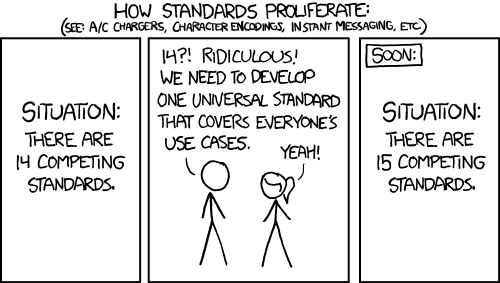
Introduction MQTT was first released in 1999, so it's been around for a while. Its main purpose is to allow low power and resource constrained devices to send and recieve data. It's almost always used on top of TCP/IP, although, strictly speaking, other types of transport can be used. 
Interoperability
MQTT allows for interoperability at the transport layer, but has no protocol specific payload. This means that different devices that exchange data using MQTT, but there's no guarantee that the data that they exchange makes sense to one another. Put another way, MQTT is useful moving a bucket of bits from one place to another, but theres no standard on what those bits mean, which means that there's really no 'out of the box' interoperability between devices from different vendors, unlike with common industrial protocols like Modbus or DNP3. Cirrus Link's SparkPlug format is an effort to increase interoperability when using MQTT. It specifies a payload format so that all devices know how to interpret the transmitted data. Sparkplug is built using Google's proven protocol buffers (protobufs) serialization technology. Sparkplug is specific .proto implementation that has support for pretty much any type of industrial data that a device would want to send, including tabular, non-numeric and historic data. Sparkplug isn't just a payload format, however. It also includes features like node birth and death, device birth and death, clean disconnects, and others. These features facilitate advanced functionality like automatic tag generation when using Inductive Automation's Ignition SCADA product, but muddy the waters between what the protocol does, and what the payload does. The use of protobufs as a payload format raises an interesting question: Why use MQTT at all if protobufs formatted data can be used with just TCP/IP transport? There are good reasons to use MQTT, of course, but sometimes it might make sense to just ship your protobufs using TCP/IP. 
Security and Encryption
MQTT has support for authentication starting with version 3.1.1, which was released in 2014. Authentication allows sending a username and password from the device to the broker when an MQTT connection is initialized. Credentials are sent in plain text unless transport encryption like TLS is used. MQTT is most almost always used on top of TCP/IP transport, and TCP/IP supports encrypted connections using TLS, so all of the features of TLS are available, including advanced features like Mutual TLS (mTLS). VPNs, private APNs, virtual LANs and other security-centric features can also be used without any problems. The security story for MQTT is quite a bit better than for legacy protocols like Modbus. However, once you add TLS and VPN and mTLS, your lightweight M2M communications story starts looking a bit more heavy. 
Publish/Subscribe
The biggest difference between MQTT and other industrial protocols like Modbus or DNP3 is the the fact that MQTT uses a publish/subscribe model instead of a client/server model. All MQTT messages are published to a broker. Devices that want to listen for messages subscribe to topics on the broker, and when the broker receives a message on that topic, it pushes it out to whoever is subscribing. In this way, data from a device is made available to multiple systems. There's no question that using a pub/sub model allows data to make it's way to different clients easily, but it often comes with quite a bit of complexity that's not immediately obvious. For example, the system always needs a broker, which is single point of failure. In a high reliability system, multiple brokers are needed, and some fail over mechanism is needed for both publishers and subscribers to know which broker is active at any time. Adding control, where field devices subscribe to topics, makes this even more complex. Any device that has access to an MQTT namespace can publish a new value to a topic. All of the devices that are subscribed to that topic will get an update, which is great. But, from a security and auditing standpoint, it's sometimes not obvious where the change came from and why it was made, since so many different clients can be subscribed to a topic. On the whole, traditional automation systems and the client server model are conceptually simpler, and it's obvious to understand how data is moving. Pub/sub is great for getting data to different clients, but there's no technical reason why this can't be implemented just as easily with traditional industrial automation systems. Even if you want to use MQTT, is the correct place for the MQTT broker in between the field devices and SCADA server, or on the back end of the SCADA server? Using the second approach still allows you break data out to multiple clients, but with the security and auditability of knowing that only the SCADA system will actually communicate with field devices. 
Communications Efficiency
MQTT uses communications bandwith very efficiently. Because data is pushed from devices, and not polled from a master, data only needs be sent when a value changes. This also leads to a responsive system, where changes are seen immediately, instead of waiting for the next scheduled poll. These features are not exclusive to MQTT, however, and can be found in industrial protocols like DNP3. 
Final Thoughts
MQTT is certainly a useful protocol with many interesting features. However, it's no panacea, and implementation must be considered carefully. It's much more important to first think about the requirements of your system - how data should flow, where it's generated and where it's needed, and how it needs to be transformed to be useful. A protocol is not a solution, it's just once piece of a complex and ever changing puzzle. With the proliferation of cloud services, there are many different ways to move and transform data securely and reliably. An optimial data transport mechanism cannot be chosen in a vacuum, but only after your requirements are well understood. I recently had an interesting conversation with a customer about galvanic isolation. They were using a current supply for cathodic protection, but the devices were breaking in the field. The solution from the vendor was to use an isolated DC/DC to the input of the current supply device. How does isolation solve the problem? If you look at the circuit below, there's no reason isolation would be required. Power comes into the DC/DC converter, and then the current source pushes current through the load. The schematic hides the details of the current source circuit, but the details are important to understand why this doesn't work. In both current source circuits, the load is not connected to ground. It has to be connected to an internal point within a circuit. If the bottom side of the load is connect to ground, then a short circuit to ground occurs. Current through the load resistor flows directly to ground, and bypasses the control circuitry. Isolation breaks the ground loop and forces current to be returned through the current source, instead of to the power source. Although the example circuitry shown above is fairly simple, the same principles apply to more complex circuity. I recently designed a 4 to 20 mA current output using a Texas Instruments DAC161S997.
The simplified schematic of this circuit is shown below. In the schematic, the DAC is loop powered. If the loop power is not isolated from the power input to the IC, then current will return to ground at the COMD/COMA pin, and not through LOOP-, which is wrong.
I recently read an interesting article about problem solving. Hopefully you have time to read the entire article, because it's great, but the summary is that figuring out the right thing to work on is a critical ingredient for success, and that it's pretty easy to spend too much time working on the wrong things.
The article tells the story of several teams chasing a prize for human powered flight. After 10 years of effort without any success, it occurs to one individual, Paul MacCready, that the real problem that needs to be solved is not human powered flight, but the ability to rapidly develop and test disposable prototypes.
Up until then, each plane had taken "upwards of a year" to be built, only to crash to the ground in the first few minutes of testing. Each trial would take an entire year of effort. But, with the new approach, "the rebuild, retest, relearn cycle went from months and years to hours and days." The prize was claimed within a few months after implementing the new approach, 18 years after the competition started.
I really like this story, because I find some small similarities with it and the development of SCADASuite and our application framework. We started out wanting to develop applications for SCADAPack RTUs, but we found that developing a single application was extremely time consuming, especially when we included time for testing and documentation. Changes were even worse. If it took so long to build a single application, how were we ever going to build a suite of applications? The answer was to take a step back, and start working on the right problem, which was building our application framework. Using this framework, we can develop applications in weeks, instead of months. If an application isn't right, we can rework the whole thing in days. With the framework in place, we could finally start delivering the applications that we wanted.
Below is an interview with Elon Musk about SpaceX where he says something similar: it's really important to ask the right questions, and sometimes even smart engineers are guilty of spending too much time optimizing something that shouldn't be there in the first place. We could either have worked harder at building individual applications, or we could take a step back, and think about whether building applications one by one is the right approach.
|
SUMMARY
Commentary and insight on emerging trends and technology in industrial automation, along with whatever else catches our fancy. Archives
December 2019
Categories
|


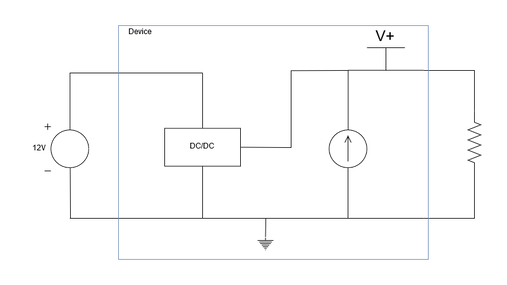


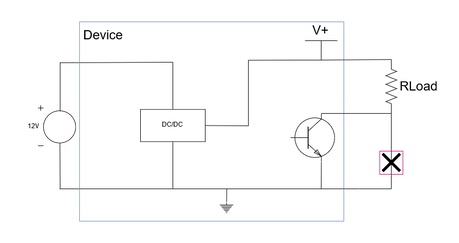
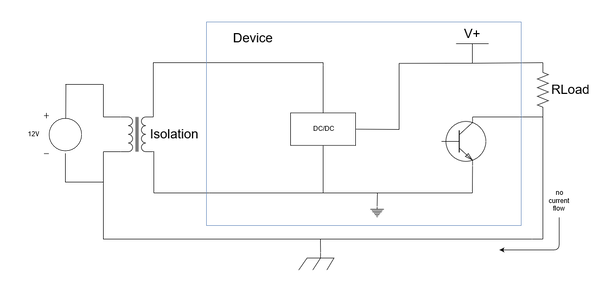


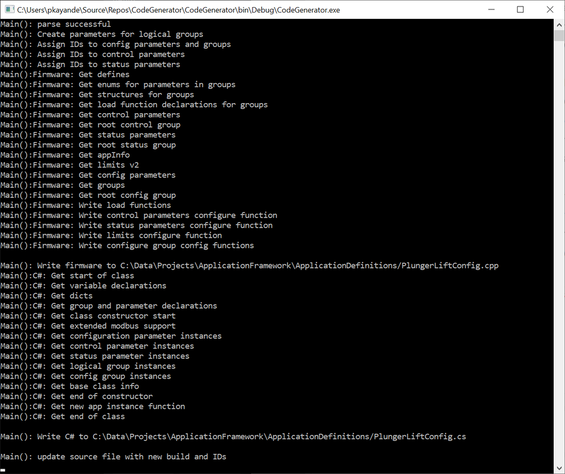
 RSS Feed
RSS Feed
